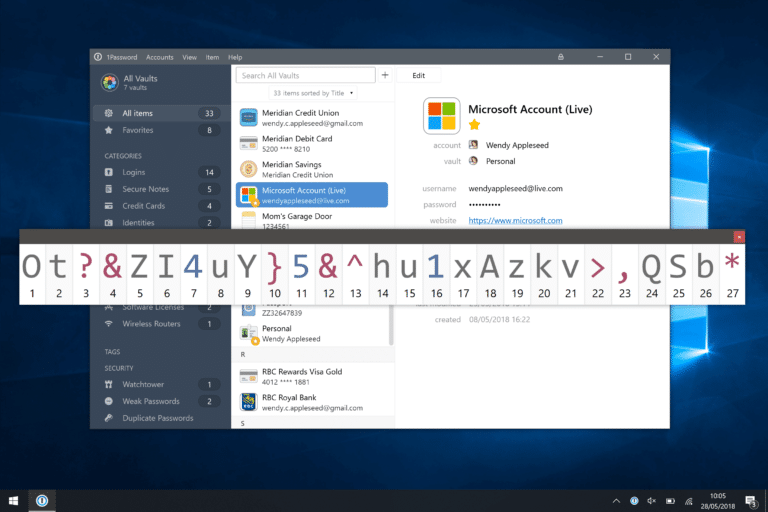Learn how to manage your app credentials
The Desktop.com Password manager stores passwords for apps in one place. In this way, you will not have to select a username and password on the login page or push the login button each time you want to launch the app.
The Beginner's Guide to 1Password Decide Which Payment Plan You Want and Create an Account. While 1Password has a trial version you can check out free for. Download and Set Up 1Password for Your Computer, Browser, and Phone. Now that you’ve decided which payment option to. This will help you if you want to set a password. This will help you if you want to set a password.
The Desktop.comPassword manager will autofill your app credentials after you set them up for the app.

- Right-click 1Password's icon in Chrome's toolbar Settings General Ensure the 'make 1Password the default password manager' option is on copy and paste this text to the browser's address.
- “Keeper was the first password manager I could find that supported the U2F hardware keys that we use and this was a non-negotiable requirement at the time and still is. The support is really excellent and above expectations - On all my questions and concerns, I have received a reply within an hour and I am situated in Southern Africa.”.

If you haven’t installed the Browser plugin, you will get a prompt to install the extension.
The browser plugin automatically recognizes when new credentials to apps or sites are entered and allows you to add password-based apps from your browser to a desktop. You won’t need to create apps manually and later update login credentials, as this will be configured automatically.
How to manage passwords for apps:
Please, make sure that you unlocked your credentials by entering the master password set for your Desktop.com account before managing passwords.
The “Unlock credentials” button is located on the left panel, under the workspace list.
- Go to the Apps section at your desktop
- Right click on the app and then click the Edit app button
- Click the Manage passwords button
- Enter the login and password, which you use for this app and then click the Update button
Please,note, that some apps have login forms which we currently do not support.
1password Desktop Windows
All apps with stored credentials will belong to the section “My passwords' in the App Store
How to manage apps from 'My passwords' section:
- Go to the 'Apps' section at your desktop
- Click the Add button
- Navigate to the My passwords menu
- Click the button with 3 dots imaged and then click the 'Edit' button
- In the Edit app menu tap the Manage button
- You can then change your credentials for this app
- Click the 'Update' button in order to finish the process.
What happens if I forget the password for my Desktop.com account ?
You can still change the password for logging in to Desktop.com by following the instructions on how to change your password. You will restore an access to your Desktop.com account, but your workspace owner will need to approve your password change in order to restore an access to your app credentials (as you will still have your old password set for unlocking app credentials before the owner’s approval)

If you are the workspace owner, you will get a notification, asking you to confirm the password change for the user. You will need to accept the password request change in order to grant the user access to stored passwords.
How to manage passwords on a mobile device (Android):
- Open the Desktop.com app
- Tap the Expand menu button
- Tap the desktop, where you need to manage stored app credentials and then tap the Expand menu button again
- Tap the Show menu button
- Tap the 3 dots button and then tap the Edit button
1password For Windows Login

- Tap the Manage passwords button in the edit app menu
- Enter the login and password which you use for this app and then tap the Update button
To access my Passwords section on the mobile device:
- Tap the Add new app button
- Navigate to the My passwords section
1password For Windows Cost
Please, find more guides on using the Desktop.com in the related articles:
